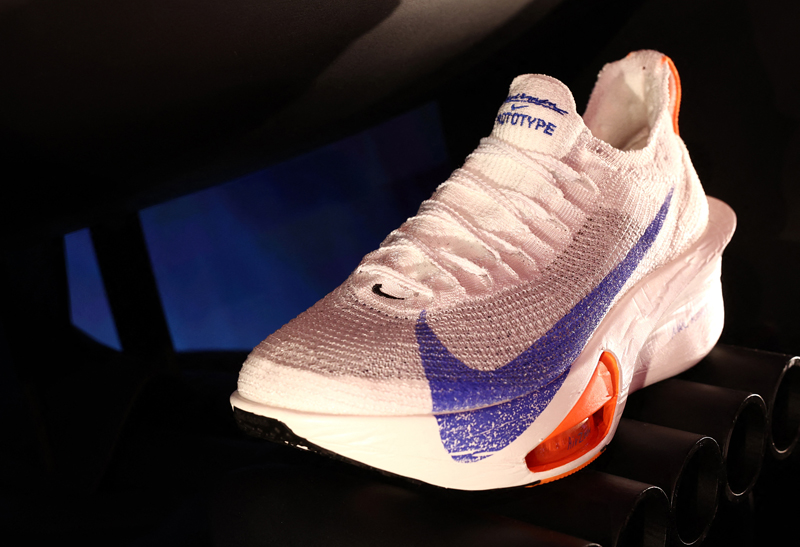You are viewing 1 of your 1 free articles. For unlimited access take a risk-free trial
There’s an app for that!

Are you a compulsive mobile tapper when training? Alicia Filley investigates the validity and reliability of mobile apps and asks whether they really add value to your training programme...
Nearly everyone uses a mobile phone. They are so common, in fact, that in 2014 an estimated 80% of the world’s population owned oneCBr J Sports Med. 2013 May;0:1-5. Experts predict that number will rise even higher by the end of 2016Sensors. 2013;13:5317-5337.
The operating systems in today’s smartphones contain application-programming interfaces that allow for the running of third party applications on the device. These pieces of software, known as ‘apps’, use the mobile’s operating system to perform specific tasks.
In 2010, nearly one in 10 smartphone users downloaded apps from the health and fitness categoryHealth Educ Behav. 2013 Apr;40(2):133-9. Undoubtedly, that number is larger today, with a multitude of apps geared toward athletes. A thorough review of the submission requirements for new apps to the Apple App Store reveals that while an app must be easy to use and bug free, only medical apps with information used to diagnose or treat patients are brought under any sort of scientific scrutiny. Yet, how many of us download apps without questioning the validity of the information they provide the stats they track, or their ability to foster a desired change in our athletic performance?
Changing behaviour
I went looking for stats on how many people actually lose weight, build muscle or gain strength using apps and couldn’t find any published results. The app ‘My Fitness Pal’ (see figure 1) claims on their website (myfitnesspal.com) that “Millions of people have lost weight with MyFitnessPal’s FREE calorie counter.” However, only anecdotal stories appeared on the website, not actual statistical follow up with users.Figure 1: MyFitnessPal App

To answer the effectiveness question, researchers at the University of California recruited 212 overweight middle-aged women to embark on a weight loss programAnn Intern Med. 2014;161. Half of the women used the My Fitness Pal app and the other half discussed weight loss with their primary care physician. After six months, the results showed that both the control group and the app group lost an average of five pounds - showing the app was no better (or worse) than standard health recommendations.
So, what makes an app successful in producing change or enhancing your level of fitness? The answer seems to lie in how many elements of health behavior theory are present in the app. Researchers assessed 127 apps from the Health and Fitness category in the Apple App Store for the presence of any of 100 constructs, which included aspects of behavioral change such as goal setting, stimulus control, social support, perceived barriers, and cues to action.
The research found an average of just 10 behaviour change elements in the appsHealth Educ Behav. 2013 Apr;40(2):133-9. In other words, most apps tested failed to fully utilise proven elements of behavioral change. Knowing this, you must approach the use of apps with realistic expectations as their ability to help you run faster or train longer may be limited!
Freelectics
One app that appears to tick most of the behavior change theory boxes is the ‘Freeletics’ app, which claims more than five million users world-wide (see figure 2)i-com. 2015 Dec;14(3):244–250. Freeletics, is a free app with in-app upgrades, and guides users through highintensity workouts. The app measures performance progress and provides users with social support through online sharing, comparing, and competing with friends. According to the Fogg Behavior Model (a way of thinking about behaviour change), Freeletics contains the three elements necessary to produce changei-com. 2015 Dec;14(3):244–250. These elements are:- Motivating a person to do a behavior
- Making sure he/she has the ability to perform the desired behavior
- Triggers to nudge him/her to execute the behavior.
The Freeletics collection now contains running, gym, and nutrition apps, and includes coached feedback, which is one of the items deemed beneficial for behavioral change. This requires a paid upgrade of at least $80.00 yearly, which may seem like a steep investment for an app. But if you need a little support or guidance to complete workouts, then Freeletics could be a great tool. This applies especially to athletes who aren’t able to train regularly with a coach or team due to budget, time, or location constraints.
Figure 2: The Freeletics App

Tools for the masses
Dr. Carlos Balsalobre-Fernandez, a sports scientist, at the European University of Madrid, uses the power of the smartphone and apps to bring the technology of sports labs to the training field. The Runmatic app, which costs $9.99 at the Apple App Store, simulates an advanced gait lab by utilising the slow motion camera on the latest iPhones and iPads. These advanced cameras record video at up to 240 frames per second (fps), giving detailed information at slow speeds.To use the app, an athlete runs on a treadmill and records at least eight running cycles from the back of the treadmill using a tripod or assistant. The athlete or coach then marks the video for foot contact and take off for all eight cycles. The app detects any asymmetry between the legs and calculates contact time, flight time, step frequency, vertical oscillation, and leg stiffness. Differences in symmetry (figure 3) or other variables could be red flags for muscle imbalances, injury or overtraining. Evaluating running at different speeds may reveal a deterioration of running form at high speeds, which could lead to injury during speed drills or field sprints.
Figure 3: Runmatic app

The developers validated the app against a professional infrared platform and found it correlated highly with the professional equipment. The results of this study are pending publication in a peer-reviewed sports science journal. The app stores multiple subjects and multiple runs from each subject, allowing evaluation over time.
For running analysis, Runmatic has obvious benefits over apps such as Coach’s Eye and SloPro that permit recording of an athlete in his natural environment, but only allow subjective analysis. To lesson the artificiality of treadmill running, be sure to increase the treadmill’s incline two to three percent to simulate a more natural outdoor running posture.
CASE STUDY: Fernando Carro

Fernando Carro, a 24-year-old Spanish 3000-meter steeplechase runner, developed plantar fasciitis while preparing for the 2016 Olympic Games in Rio. Luckily, Dr. Balsalobre-Fernandez and his team previously evaluated this athlete using the Runmatic app. When tested post injury, the team noticed a decrease in the contact time, force applied in the stride, and leg stiffness of the injured side.
In this instance, the data collected previously gave the training team another tool to gauge his recovery. With frequent reassessment, the team targeted his rehabilitation toward pre-injury status. While an athlete may feel better, this objective data gives evidence as to whether or not the athlete has recovered function completely. With the ease and portability of this app, trainers can monitor athletes regularly and make better-informed decisions after injury.
If you don’t have a coach, the app is still beneficial. While you might not have the expertise to analyse the stats, regular recordings detect changes that might signal an oncoming injury or overtraining (see figure 5 overleaf). Consult with a trainer or coach if you notice an irregularity.
Sound principles
Today’s apps are powerful tools, but they aren’t always based on science. Researchers at the University of Florida compared the content of 30 popular exercise prescriptive apps found in the Apple Apps Store to the exercise guidelines and principles outined by the American College of Sports Medicine (ACSM)JMIR mHealth uHealth. 2015;3(3):e77. Only one app met more than 50% of the ACSM recommendations for overall fitness.At VU University in Amsterdam, researchers similarly reviewed sports-injury apps for evidencebased information on sports injury prevention or rehabilitationBr J Sports Med. 2014 Jun;48(11):878-82. Of the eighteen iPhone and iPad apps evaluated, only four contained scientifically sound information. While the information in 60% of the apps reflected best practices, the remaining 40% not only put forth sub-par information, some information actually contradicted scientific evidence. So while some apps can be helpful, you need to be cautious about relying too heavily on them. Don’t let them distract you from the real business of enhancing your performance through hard work and smart training.
Apps that provide more extensive data analysis are usually web based and sync with wearable devices to collect data. Although downloadable for free, access to the advanced capabilities of these apps requires a purchased upgrade. The apps in table 1 seem to be useful tools to organise training, evaluate workouts, and enhance performance, but lack research to back up these assertions.
Table 1: Potentially useful apps
FEATURES OF APPS 2022 10 04
| Feature | Sport Tracks | Training peaks | Rubitrack for Mac |
|---|---|---|---|
| Web based | X | X | Downloadable software for Mac only |
| Companion mobile app | No but accessible with Wi-Fi or cellular on mobile devices | X | Yes, for iOS only |
| Multisport compatible | X | X | X |
| Syncs with multiple wearable devices | X | X | X |
| Multisport compatible | X | X | X |
| Syncs with multiple wearable devices | X | X | X |
| Equipment Tracking | X | X | X |
| Coaching plans | Available for in app purchase | ||
| Coach matching Service | X | ||
| Coach access to analyse data, send private messages or upload workouts. | X | X | |
| Incorporates weather information into workout | X | X | |
| Indoor trainer integration | X | ||
| Social media compatible | X | X | X |
| Meal plan compatible | Yes-input meal plan directly or sync with My Fitness Pal to upload food diary | ||
| Cost | $59.99 per year | Premium level upgrade starting at $119.00 per year. | $24.99 for upgraded ioS app $110.00 for Mac version |
| Detailed metrics for workouts including pace, elevation, and segments | X | Only with premium upgrade | More detailed charting with upgrades |
| Prognostic ability based on future planned workouts | X | Only with premium upgrade | |
| Sync workouts with outlook, Google, and iCal calendars | Only with premium upgrade |
App user profile: Richard Tramm

Richard Tramm is a 50-year-old US based athlete who has used the ‘Training Peaks’ app consistently for the last four years. He began using it at the request of his coach. While the coach now uses a different app to track his data, Richard told me in an interview why he continues to use Training Peaks to support his workouts as he prepares for the upcoming U.S. Marine Corps Marathon in Washington, DC.
Richard began running 10 years ago as a way to regain his health. In the last 10 years he has gone from a back-of-the-pack athlete to recently winning over 10 age-group awards. He has completed five Iron Man races and is slated to make it six in the Spring of 2017. His race accomplishments range from agegroup wins in 5K races to respectable finishes in 50 mile ultras.
As a triathlete, Richard has used Training Peaks to log and track his swims, bikes, and runs, as well as daily weigh-ins. His favorite aspect of the app is that it is a clean and concise place to store all his data. With everything in one place, he can easily compare training sessions, such as how he performed in today’s 20-mile run to how he performed on his last 20-mile run (see figure 6).
Typical of most athletes, Richard uses wearable devices to gather his training data. His Garmin running watch and cycling computer sync with the app through Garmin Connect and instantly upload his data. His smart scale also uploads his daily weigh in. He trains with a heart rate monitor and regularly performs aerobic function tests, which he can compare on the app. He reports spending 75% of the time on the Training Peaks app and only goes to the web when he wants to really dive into the reports function. He does not use the meal planning function. When asked what he recommends for anyone new to the app, Richard says, “I used the app for nearly a year before I understood all of its features, most of which are really useful. My advice is to take the time on the front end to explore the help files and really learn the app.”
Newsletter Sign Up
Testimonials
Dr. Alexandra Fandetti-Robin, Back & Body Chiropractic
Elspeth Cowell MSCh DpodM SRCh HCPC reg
William Hunter, Nuffield Health
Further reading
Newsletter Sign Up
Coaches Testimonials
Dr. Alexandra Fandetti-Robin, Back & Body Chiropractic
Elspeth Cowell MSCh DpodM SRCh HCPC reg
William Hunter, Nuffield Health
Keep up with latest sports science research and apply it to maximize performance
Today you have the chance to join a group of athletes, and sports coaches/trainers who all have something special in common...
They use the latest research to improve performance for themselves and their clients - both athletes and sports teams - with help from global specialists in the fields of sports science, sports medicine and sports psychology.
They do this by reading Sports Performance Bulletin, an easy-to-digest but serious-minded journal dedicated to high performance sports. SPB offers a wealth of information and insight into the latest research, in an easily-accessible and understood format, along with a wealth of practical recommendations.
*includes 3 coaching manuals
Get Inspired
All the latest techniques and approaches
Sports Performance Bulletin helps dedicated endurance athletes improve their performance. Sense-checking the latest sports science research, and sourcing evidence and case studies to support findings, Sports Performance Bulletin turns proven insights into easily digestible practical advice. Supporting athletes, coaches and professionals who wish to ensure their guidance and programmes are kept right up to date and based on credible science.










